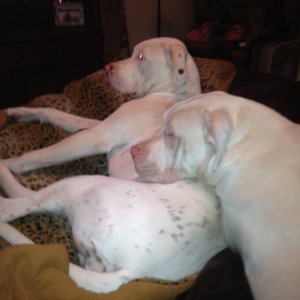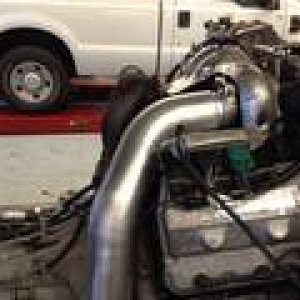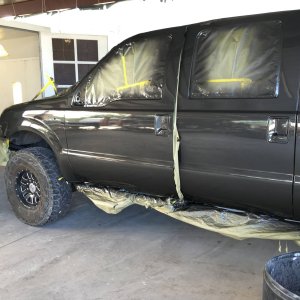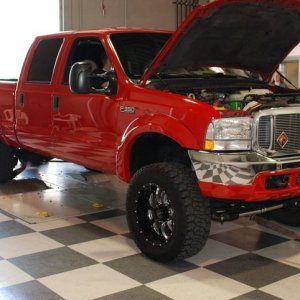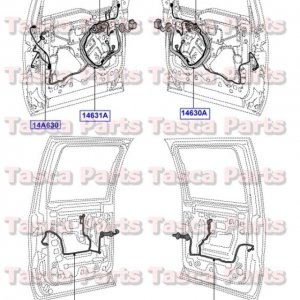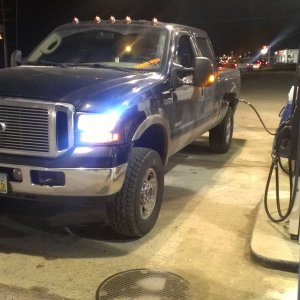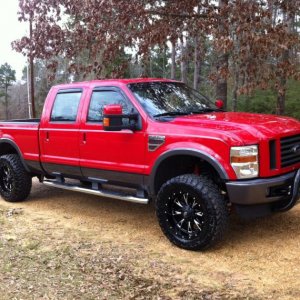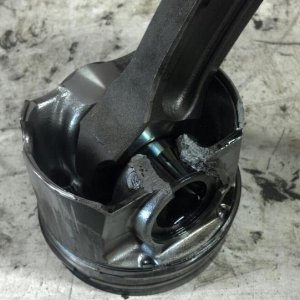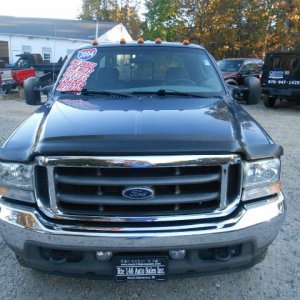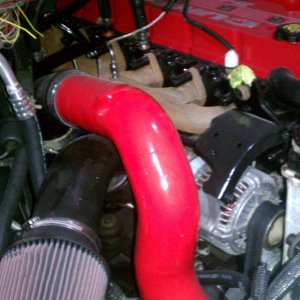You should depending on the brake fluid you use and the humidity of your area be flushing your brake system every 1-3 yrs. Most people almost never fully flush their systems.
Anytime you have brake fade it means you have boiled the fluid at and near the calipers of those brakes and that fluid should be bleed enough to remove that boiled fluid. Not much maybe 1/4 cup per caliper.
Today there are many brake fluids that far far exceed what you typically find in the local china mart parts store. What to look for is a very high wet rate and then very high dry rating. Brake fluid will always over time absorb water even though its suppose to be a closed system. The closer these two ratings are to each other the less change in performance you will see over time as the fluid takes on water.
The top dog for that would likely be Castrol React SRF. While there are a very few that actually have a slightly higher dry rating nothing touches its wet rating or the difference between dry and wet rating. Issue is cost. Its not cheap by any stretch and some may not see the need.
Its specs are Dot 4 Dry 608°F Wet 518°F Difference of only 90°F
Another great performer that is a bit less pricy but has the second best difference between dry and wet and still has very high over all boiling points is ATE Type 200 and its sister that is no longer allowed after like 20 yrs of being here Super blue What made this combo great was super blue was well blue and 200 amber. When you did a flush it made it super easy to know when you had completed the flush. Each flush you alternated between the two. DOT in its bone head wisdom decided to force the rule it has had on the books forever that all brake fluids must be amber or clear. Funny that it was not an issue till this last year for them after countless years of it being on the market with not any issues I ever saw reported.
Still even so ATE Type 200 is a great fluid specs DOT 4 Dry 536°F Wet 396°F
There are a number of other fluids. I have a rather extensive list that took me forever but it seems another has done a good job of listing all the top end fluids as well
http://www.lelandwest.com/brake-fluid-comparison-chart.cfm?startRow=1&SF=4&ST=2
I think the link has it organized from highest wet to lowest. I keep my limits high but 525 dry and 380 wet for minimum spec when I look for a fluid. With that I look for those with the smallest difference between the dry and wet rating. Number one is the Castrol @ 90 and number two is ATE Type 200 @ 140.
But many other great fluids such as:
Motul RBF 600
Wilwood EXP
Brembo LCF 600+
AP Racing PRF660
The Brake Man Xtreme 6
Amsoil Series 600 at the lower end of what I want to run but better than the typical stuff in the autoparts store.
The other and really the main issue with our brakes is the calipers and rotors are on the small side. No matter how great the pads and fluids the caliper can only put so much force given its size and number of pistons etc. Then no matter how great the caliper setup there is only so much surface area of its circumference surface area for a brake rotor of a given diameter.
Anytime you have brake fade it means you have boiled the fluid at and near the calipers of those brakes and that fluid should be bleed enough to remove that boiled fluid. Not much maybe 1/4 cup per caliper.
Today there are many brake fluids that far far exceed what you typically find in the local china mart parts store. What to look for is a very high wet rate and then very high dry rating. Brake fluid will always over time absorb water even though its suppose to be a closed system. The closer these two ratings are to each other the less change in performance you will see over time as the fluid takes on water.
The top dog for that would likely be Castrol React SRF. While there are a very few that actually have a slightly higher dry rating nothing touches its wet rating or the difference between dry and wet rating. Issue is cost. Its not cheap by any stretch and some may not see the need.
Its specs are Dot 4 Dry 608°F Wet 518°F Difference of only 90°F
Another great performer that is a bit less pricy but has the second best difference between dry and wet and still has very high over all boiling points is ATE Type 200 and its sister that is no longer allowed after like 20 yrs of being here Super blue What made this combo great was super blue was well blue and 200 amber. When you did a flush it made it super easy to know when you had completed the flush. Each flush you alternated between the two. DOT in its bone head wisdom decided to force the rule it has had on the books forever that all brake fluids must be amber or clear. Funny that it was not an issue till this last year for them after countless years of it being on the market with not any issues I ever saw reported.
Still even so ATE Type 200 is a great fluid specs DOT 4 Dry 536°F Wet 396°F
There are a number of other fluids. I have a rather extensive list that took me forever but it seems another has done a good job of listing all the top end fluids as well
http://www.lelandwest.com/brake-fluid-comparison-chart.cfm?startRow=1&SF=4&ST=2
I think the link has it organized from highest wet to lowest. I keep my limits high but 525 dry and 380 wet for minimum spec when I look for a fluid. With that I look for those with the smallest difference between the dry and wet rating. Number one is the Castrol @ 90 and number two is ATE Type 200 @ 140.
But many other great fluids such as:
Motul RBF 600
Wilwood EXP
Brembo LCF 600+
AP Racing PRF660
The Brake Man Xtreme 6
Amsoil Series 600 at the lower end of what I want to run but better than the typical stuff in the autoparts store.
The other and really the main issue with our brakes is the calipers and rotors are on the small side. No matter how great the pads and fluids the caliper can only put so much force given its size and number of pistons etc. Then no matter how great the caliper setup there is only so much surface area of its circumference surface area for a brake rotor of a given diameter.



